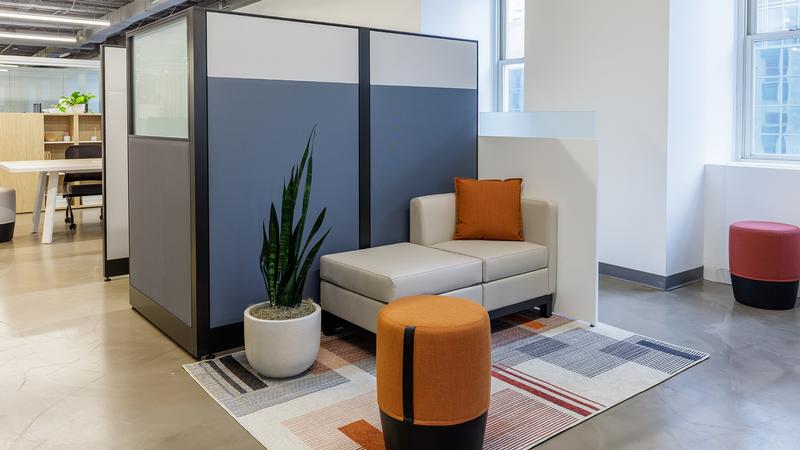The executive collapses into her chair at 3 PM, staring at her computer screen through tired eyes. The open office buzzes around her, phones ring constantly, and conversations blur into background noise. Her stress levels have been climbing for weeks, productivity dropping, and sleep quality suffering. She needs just five minutes of peace to reset her mind. This scenario plays out thousands of times daily across Canadian workplaces, where Gallup research reveals that 44% of employees experience high stress levels on any given day, a significant increase from 36% in 2012. The solution arriving in forward thinking office interior design nationwide comes in compact, pod shaped packages that promise to transform how employees manage stress and recharge during work hours.
Statistics from McKinsey show that companies investing in employee wellness see 20% higher productivity rates and 33% lower turnover among hybrid workers. Office wellness pods represent the newest evolution in corporate interior design, providing private sanctuaries where employees can decompress, meditate, and restore their mental clarity. These revolutionary spaces combine advanced lighting technology, ergonomic design, and acoustic isolation to create micro environments that actively promote wellbeing in busy office environments.
How Office Wellness Pods Function in Modern Office Design
Office wellness pods operate as self contained wellness environments within larger office interior design frameworks. These compact spaces typically measure between 20 and 60 square feet, providing enough room for one or two people to engage in stress reduction activities. Modern office design increasingly incorporates these pods as essential infrastructure rather than luxury amenities, recognizing their role in maintaining employee mental health and productivity.
The basic functionality centers on creating controlled environments separate from the chaos of open offices. Professional corporate interior design teams position wellness pods strategically throughout office interior layouts to ensure easy access without disrupting workflow patterns. The pods feature sound dampening materials that reduce external noise by up to 35 decibels, creating peaceful spaces where employees can engage in meditation, breathing exercises, or simply quiet contemplation.
Temperature control systems within wellness pods maintain optimal comfort levels independent of broader office HVAC systems. This autonomy allows users to customize their environment according to personal preferences and specific wellness activities. Canadian office furniture manufacturers have responded to growing demand by developing pods with integrated climate controls that operate efficiently in Canadian weather conditions throughout the year.
Power and technology integration enables wellness pods to support various wellness applications and devices. Modern office design specifications include USB charging ports, audio connectivity, and app controlled environmental settings. These features transform basic quiet spaces into sophisticated wellness platforms that support guided meditation, nature sounds, and personalized relaxation programs.
Ventilation systems ensure fresh air circulation within enclosed pods while maintaining acoustic isolation. Office lighting systems coordinate with HVAC controls to provide optimal air quality that enhances rather than detracts from wellness activities. Professional office interior design teams understand the critical importance of air quality in wellness applications and specify appropriate ventilation rates for sustained occupancy.
Essential Role in Employee Wellbeing Through Air and Light Quality
Air quality management within wellness pods directly impacts their effectiveness for stress reduction and mental clarity. Research from Stanford demonstrates that carbon dioxide levels above 1000 parts per million reduce cognitive function by up to 15%, making proper ventilation essential for wellness applications. Office interior design professionals specify advanced air filtration systems that remove pollutants and allergens while maintaining optimal oxygen levels.
Negative ion generation technology increasingly appears in premium wellness pod installations. These systems replicate the air quality benefits found near waterfalls and forests, creating environments that naturally reduce stress hormones and improve mood. Corporate interior design teams incorporate negative ion generators as standard features in high performance wellness installations.
Circadian rhythm lighting represents the most sophisticated aspect of pod based wellness technology. Blue light exposure during morning hours stimulates alertness and helps regulate sleep wake cycles, while red light promotes relaxation and stress reduction during afternoon sessions. Flexible office furniture manufacturers now integrate full spectrum LED systems that automatically adjust color temperature throughout the day to support natural biological rhythms.
Blue light therapy within wellness pods provides specific neurological benefits that enhance cognitive function and mood regulation. The University of Warwick research demonstrates that workplace happiness makes employees 12% more productive, while specific blue light wavelengths around 480 nanometers stimulate serotonin production for 15 to 30 minutes sessions. Commercial interior design specifications increasingly include blue light therapy capabilities as standard features rather than optional upgrades.
Red light therapy creates complementary wellness benefits through different neurological pathways. Wavelengths around 660 nanometers promote cellular recovery, reduce inflammation, and activate parasympathetic nervous system responses that counteract workplace stress. Canadian office furniture suppliers report growing demand for pods equipped with both blue and red light therapy capabilities.
Dynamic lighting programs combine multiple wavelengths in sequences designed for specific wellness outcomes. Morning energizing programs begin with blue dominant spectrums that gradually incorporate full spectrum white light. Afternoon relaxation programs transition from white light through amber to deep red wavelengths that prepare the nervous system for rest and recovery.
Professional Interior Design Expertise for Optimal Wellness Integration
Working with qualified office interior design professionals ensures wellness pods integrate effectively with existing corporate interior design schemes while maximizing their therapeutic benefits. Professional teams understand the complex relationships between pod placement, traffic flow, and user psychology that determine program success or failure.
- Space planning expertise becomes critical when incorporating wellness pods into established office interior design layouts. Professional teams analyze usage patterns, identify optimal locations, and ensure wellness areas remain accessible without disrupting productivity zones. Their experience prevents common mistakes like placing pods near high noise areas or blocking emergency egress routes.
- Lighting coordination requires sophisticated understanding of both circadian biology and office lighting systems. Professional corporate interior design teams ensure wellness pod lighting integrates seamlessly with broader illumination strategies while providing specialized therapeutic benefits. They understand how different light wavelengths interact and can prevent conflicts that reduce effectiveness.
- Furniture selection for wellness pods extends beyond basic seating to include specialized pieces that support various wellness activities. Flexible office furniture systems allow pods to accommodate meditation postures, stretching exercises, and relaxation positions. Professional designers specify pieces that maximize space efficiency while maintaining comfort during extended wellness sessions.
- Technology integration becomes increasingly complex as wellness pods incorporate more sophisticated features. Office interior design professionals coordinate power distribution, network connectivity, and control systems that enable seamless user experiences. Their expertise ensures reliable operation while maintaining the serene aesthetic that supports wellness objectives.
- Acoustic design requires professional analysis to achieve optimal sound isolation without compromising air circulation or emergency access. Corporate interior design teams understand how different materials and construction techniques affect both sound transmission and psychological comfort. They create environments that feel secure and private while meeting safety requirements.
- Canadian office furniture selection benefits from professional guidance regarding climate considerations and local building codes. Professional teams understand which materials and systems perform optimally in Canadian conditions while meeting provincial safety and accessibility requirements.
Frequently Asked Questions (FAQ):
How do professional office interior design teams determine optimal placement for wellness pods within existing corporate interior design layouts?
Professional office interior design teams analyze traffic flow patterns, noise levels, and privacy requirements to identify locations that maximize accessibility while maintaining the peaceful environment essential for wellness activities. They typically position pods away from high traffic areas and mechanical equipment while ensuring easy access from workstations. Corporate interior design professionals also consider natural lighting opportunities and proximity to quiet zones when planning wellness pod placement. The goal is creating spaces that feel separate from work pressures while remaining conveniently located for regular use during busy workdays.
What specific lighting benefits do blue and red wavelengths provide in office wellness pods, and how do Canadian office furniture manufacturers integrate these technologies?
Blue light wavelengths around 480 nanometers stimulate serotonin production and regulate circadian rhythms, improving alertness and mood during morning wellness sessions. Red light at 660 nanometers activates parasympathetic responses that reduce stress and promote cellular recovery during afternoon relaxation periods. Canadian office furniture manufacturers integrate full spectrum LED systems with programmable controls that automatically adjust color temperature throughout the day. Modern office design specifications include both wavelengths as standard features, allowing users to select optimal lighting based on their wellness objectives and time of day.
How does professional corporate interior design expertise ensure wellness pods integrate effectively with existing office lighting systems and HVAC requirements?
Professional corporate interior design teams coordinate wellness pod systems with building infrastructure to prevent conflicts and optimize performance. They ensure pod lighting complements rather than disrupts broader office lighting strategies while providing specialized therapeutic benefits. HVAC coordination becomes critical for maintaining air quality and temperature control within enclosed pod environments. Office interior design professionals understand power distribution requirements, ventilation rates, and control system integration that enables seamless operation. Their expertise prevents common installation problems and ensures wellness pods operate efficiently as part of comprehensive modern office design systems while maintaining therapeutic effectiveness.
Key Takeaways:
- Gallup research shows 44% of employees experience daily workplace stress, up from 36% in 2012, making office wellness pods essential corporate interior design elements
- Blue light therapy in wellness pods stimulates serotonin production and improves cognitive function, while red light promotes relaxation and parasympathetic nervous system activation
- Professional office interior design teams ensure optimal pod placement and lighting integration that maximizes therapeutic benefits while maintaining workflow efficiency
- Stanford research demonstrates that companies investing in employee wellness achieve 20% higher productivity and significantly improved retention rates
- Advanced air quality systems within pods maintain optimal oxygen levels and remove pollutants, creating environments that naturally reduce stress hormones and improve mood
- Canadian office furniture manufacturers have developed climate controlled pods specifically designed for year round operation in Canadian weather conditions
- Flexible office furniture systems within pods accommodate multiple wellness activities from meditation to stretching while maximizing space efficiency in compact environments
- Professional corporate interior design coordination prevents common installation mistakes and ensures wellness pods integrate seamlessly with existing office interior design schemes
- Dynamic lighting programs combine blue and red wavelengths in sequences designed for specific wellness outcomes from morning energizing to afternoon stress reduction
- Office lighting technology in wellness pods automatically adjusts throughout the day to support natural circadian rhythms and optimize both alertness and relaxation periods
The most successful corporate interior design projects recognize that employee wellness represents a strategic investment in organizational performance rather than an optional amenity. Professional office interior design teams who understand both wellness psychology and technical requirements create integrated solutions that transform workplace culture while delivering measurable business benefits. When companies prioritize wellness pod integration within their modern office design strategies, they create competitive advantages through enhanced employee satisfaction, reduced healthcare costs, and improved retention rates that directly impact bottom line performance.

